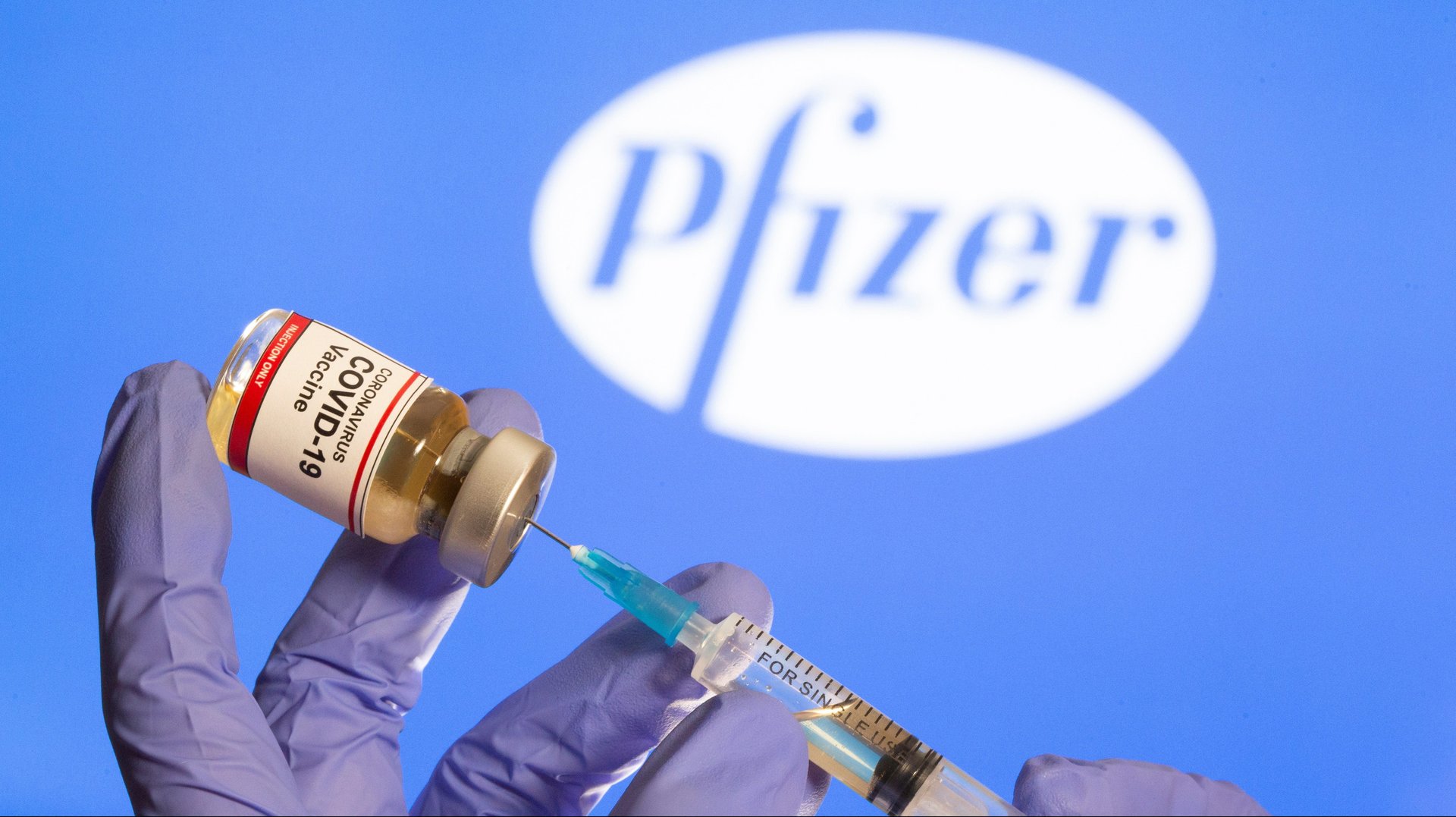What does “90% effective” mean for Pfizer’s Covid-19 vaccine?
On Monday (Nov. 9), the dynamic drug company duo of Pfizer and BioNTech announced that early results from their late-stage Covid-19 vaccine clinical trial showed their jabs were 90% effective. But that statement alone opens the door for dozens more questions—which the limited data can’t answer just yet.


On Monday (Nov. 9), the dynamic drug company duo of Pfizer and BioNTech announced that early results from their late-stage Covid-19 vaccine clinical trial showed their jabs were 90% effective. But that statement alone opens the door for dozens more questions—which the limited data can’t answer just yet.
Here’s what we know so far: According to a press release from Pfizer, the phase 3 clinical trial of its vaccine candidate is partially complete, with 38,955 of the 43,538 participants having received two injections of the candidate or a placebo. So far, 94 of those participants have developed Covid-19; the Washington Post reports that fewer than nine of those cases were in people who had received the actual injection, which is where the 90% efficacy figure comes from.
But to a public health organization like the US Centers for Disease Control and Prevention (CDC), efficacy and effectiveness mean two different things. “Efficacy” is what is demonstrated, to varying degrees, by a vaccine in a randomized trial like Pfizer’s. The same vaccine’s “effectiveness” is based on observational studies, once the shot is deployed in the real world. A vaccine’s effectiveness may not be the same as its efficacy.
Because all Covid-19 vaccine candidates are novel products, study designers take precautions: They try to pick the healthiest participants to avoid the risk of anyone developing dangerous reactions, and they carefully orchestrate the trial to make sure everyone gets their shots on the right timeline.
In the real world, some vaccine recipients will have pre-existing health issues, and will be older than the average trial participant. Real-world recipients may also be more diverse than study participants, which is one reason why Pfizer has tried to recruit people from many demographic groups for its trial; the company reports that 42% of its global participants and 30% of US participants came from “diverse backgrounds.”
Only once the vaccine is authorized and deployed will Pfizer and BioNTech be able to determine its effectiveness in many different populations, under real-world distribution conditions. This is when we’ll be able to understand other measures of how well it works to prevent disease, too.
In its statement, Pfizer said that its main endpoint—that is, the metric used to evaluate the vaccine’s efficacy—was looking at Covid-19 cases that occurred a week after a participant’s second dose. If the US Food and Drug Administration (FDA) permits it, Pfizer will go back and analyze its results for Covid-19 cases that occurred two weeks after the second dose to see if there’s a difference in immune response over time.
The company will also follow participants for up to two years, collecting more safety data and watching for how long immunity lasts. During this time, it also plans to analyze how well the vaccine decreases the severity of Covid-19 and if there’s a difference in how it works for people who’ve already been sick, per the New York Times. Right now, all of those other elements of the vaccine’s effectiveness are unknown.
Pfizer says that it will continue to enroll new participants until 164 people in the trial have developed Covid-19. But it may submit its data to the FDA for emergency use authorization as early as the third week of November, given that many participants will have been observed for two months after their last injection.
These remaining questions aren’t counts against Pfizer’s vaccine—they’re just checkboxes that will be ticked off as time passes and more results become available. Pfizer stated this morning that it plans to submit all of its phase 3 data to a journal for peer-review and publication when the trial is complete. When it comes to evaluating scientific evidence, a company’s press release is never the end game.